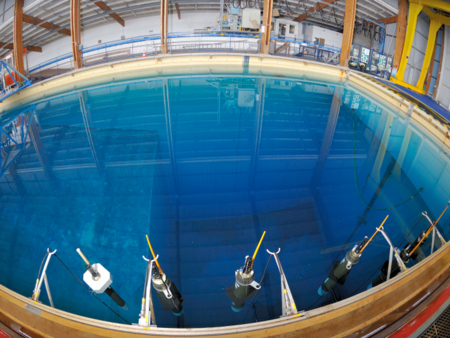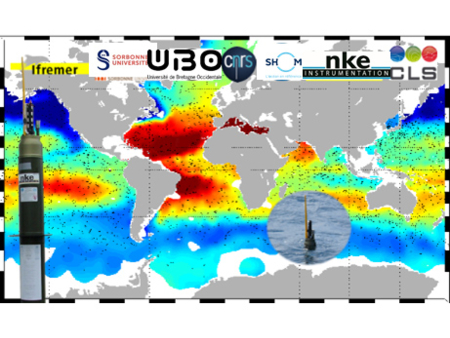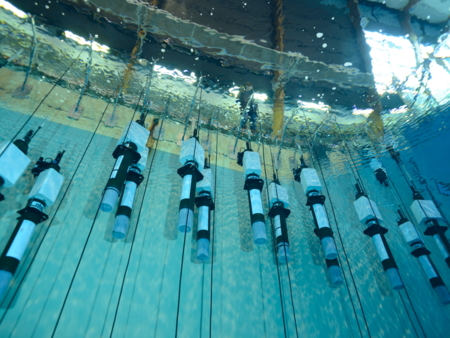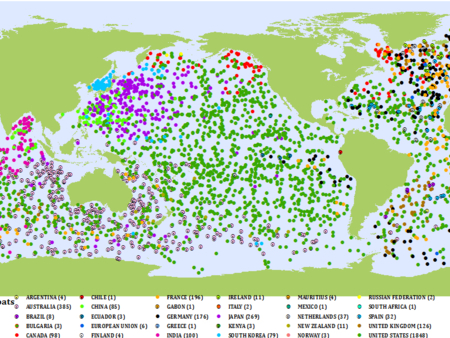Drifting Floats Reveal Nitrate Patterns in Mediterranean Sea
Next-generation autonomous platforms allow scientists to understand physical mechanisms that control nitrate availability in the Mediterranean surface water.
Source: Journal of Geophysical Research: Oceans
Source: Journal of Geophysical Research: Oceans
By Kate Wheeling, 30 March 2016
The Mediterranean Sea, a semienclosed basin nearly entirely enveloped by central western Europe and North Africa, is one of the largest nutrient-depleted oceanic regions in the world. Despite the key role of nutrients (in particular nitrate) in controlling ocean life, its dynamics is still poorly understood. For the Mediterranean, observations across the basin are, up to now, too scarce to describe seasonal and year-to-year processes accurately. The recent emergence of automatized floating platforms equipped with specific miniaturized sensors appears to be an unprecedented opportunity to explore the ocean and Mediterranean physical and biological interactions.
In their study, Pasqueron de Fommervault et al. analyzed the distribution of nitrate concentration in the Mediterranean, for the first time using floats equipped with bio-optical sensors. The researchers used data from a set of five free-drifting biogeochemical Argo floats, simultaneously deployed in the Mediterranean in 2013 as part of the French Novel Argo Oceanic Observing System program. Between 2013 and 2014, the floats collected almost 500 nitrate profiles, which were compared with a historical database of over 5000 nitrate concentration profiles from the basin, spanning the 1961–2010 period.
The results allowed the scientists to better describe the seasonal variability and to examine the role of shorter-timescale processes. The analysis revealed that on the surface, where most ocean life exists, nitrate concentrations significantly varied with the seasons only in the northwestern region of the Mediterranean Sea, peaking in abundance in January, February, and March and tapering off throughout the rest of the year. This observation directly mirrors changes in the annual maximum depth of the mixed layer, which is the upper region of the sea where turbulence mixes up water, creating a uniform layer. In this region, the winter deepening of the mixed layer, induced by wind and heat loss, is undoubtedly the primary source of nitrogen for surface water during the year. In the rest of the Mediterranean, surface nitrate concentrations showed low seasonality. Unexpectedly, an important variability was observed in the subsurface and intermediate layers and was related to mesoscale features such as eddies, as confirmed by satellite information. Results also mapped out how the vertical distribution of nitrates affected phytoplankton in the sea. At the seasonal scale, the peculiar nitrate situation of the northwestern region of the Mediterranean fostered a dramatic increase of spring phytoplankton concentration.
In spring 2015, 14 additional biogeochemical Argo floats were deployed across the Mediterranean Sea (http://www.insu.cnrs.fr/node/5098, in French), which may provide scientists with a new data set to confirm previous results and to further elucidate nutrient dynamics in the Mediterranean Sea. (Journal of Geophysical Research: Oceans, doi:10.1002/2015JC011103, 2015)
—Kate Wheeling, Freelance Writer
Citation: Wheeling, K. (2016), Drifting floats reveal nitrate patterns in Mediterranean Sea, Eos, 97, doi:10.1029/2016EO049215. Published on 30 March 2016.







